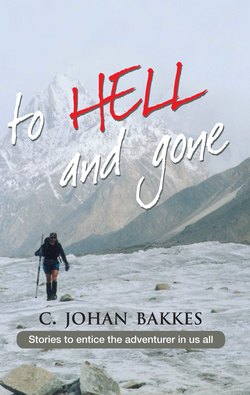Читать книгу To hell and gone - C. Johan Bakkes - Страница 19
На сайте Литреса книга снята с продажи.
ОглавлениеLandmine
We were still sitting there when the child stepped on the landmine. With an earth-shattering roar her leg was torn off and her belly ripped open.
It was early morning when Leon van Kraaienberg and I took off from Nelspruit in the Jet Bell Ranger. He, an experienced chopper pilot, and I, commissioned by the Mozambican government to determine if there were any buffalo and elephant left in the northern provinces of Niassa, Cabo del Gado and Tete. It was a long way to fly. Right across Zimbabwe and Malawi, and then on to the Ruvuma River, which forms the border between Mozambique and Tanzania.
Actually I was lucky, for we were looking at fifteen hours in the air, while a ground crew with Lampies and Arnold behind the wheel was tackling this section of Africa overland. They were hoping to be at the rendezvous on the banks of the Lugenda River in five days’ time.
The exercise cost a great deal of money. For every hour that the engines were running, we had to fork out two thousand rand – not to mention the cost of the ground crew and other logistical expenses. The chopper was loaded with plastic fuel cans, because the distances were too great to reach the refuelling points on normal tanks. I realised we were flying in a potential bomb, but I put my faith in Leon, who came very highly recommended.
We flew over Africa at a height of five hundred feet. It was an incredible experience to see the world from that perspective. At Punda Maria – in the north of the Kruger Park – we roused a herd of elephant. I secretly hoped that we would also see it happen further north. Or had the terrible war in Mozambique resulted in all game being decimated in a bid to survive? Fortunately a war in that region had held no real strategic military advantage – which was why the Mozambicans had asked us to investigate.
Somewhere on a rocky hill in the middle of Zimbabwe the helicopter touched down and we refuelled from the cans. We had unlawfully set foot on foreign soil. I used the opportunity to light my pipe. A long trip like this one could get boring, and Leon and I had already spoken at length about our families, our pasts and our futures.
From the air the destruction of the African bush was apparent. The local farmers make use of the traditional “slash and burn” method, where the bush is chopped down, set alight and the ashes ploughed in as fertiliser – for a single crop and for only one season. Then they move on. Leon told me about his second wife and their child back home.
At one stage we flew across Lake Malawi. It is a huge expanse of water. An anxious thought crossed my mind: If this flying machine should crash here, how the hell would we come out alive? It would sink like a stone and we would not be able to get out from under the rotors. Not until the water had forced them to a standstill. What was more, I had never exactly been Mark Spitz. Leon told me his wish was that if he were to die, it would be in a helicopter!
Once everyone had arrived at the rendezvous, we set to work. The scenery was incredible, with mahobohobo veld as far as the eye could see. Scattered rocky inselbergs towering over the surrounding landscape. The Ruvuma River with its masses of water and countless herds of elephant, buffalo and Lichtenstein’s hartebeest! We saw sable antelope and kudu. Clearly the war had not wreaked complete havoc here.
A Pomzet antipersonnel mine is a terrible thing. Mind you, it merely does what is expected of it, namely to bugger up the person who steps on it in such a way that it costs a great deal of money, effort and logistics to evacuate him – or her – and to put the person together again. If it happens to a soldier, he is usually out of the game of war permanently. The state is obliged to supply him with a medical pension and to support and look after him, an invalid for the rest of his life. Thus the main aim of a Pomzet is to force the enemy to its knees economically.
By the time we reached the child, her terrified, screaming little friends were crowding around her. A landmine casualty is really bad. I’d rather not go into detail. Sometimes the victim simply dies of shock.
The other children were ushered away and, ignoring the threat of Aids, we began to rip up cloth for bandages. We all had basic first-aid knowledge and we managed to stop the bleeding. The little body was rigid with shock and the eyes were white in the face. I realised that the child was not going to survive if she wasn’t evacuated to receive proper medical care.
We looked at each other. The child was dying under our hands. Some distance away stood the chopper . . . It was a nine-hour flight to Maputo – it would cost thirty-six thousand rand, not to mention the time lost.
Before anyone could say a word, a black woman came charging through the bush.
She didn’t cry. She didn’t scream. The anger in her eyes seemed to supplant all emotion. She clutched the child to her breast, looked at us as if she wanted to say, “Leave my child alone, you bastards,” and walked back into the bush, carrying the broken little body.
P.S. Two months later Leon died in a car crash somewhere between Nelspruit and Watervalboven. The rescue helicopter could not evacuate him.
